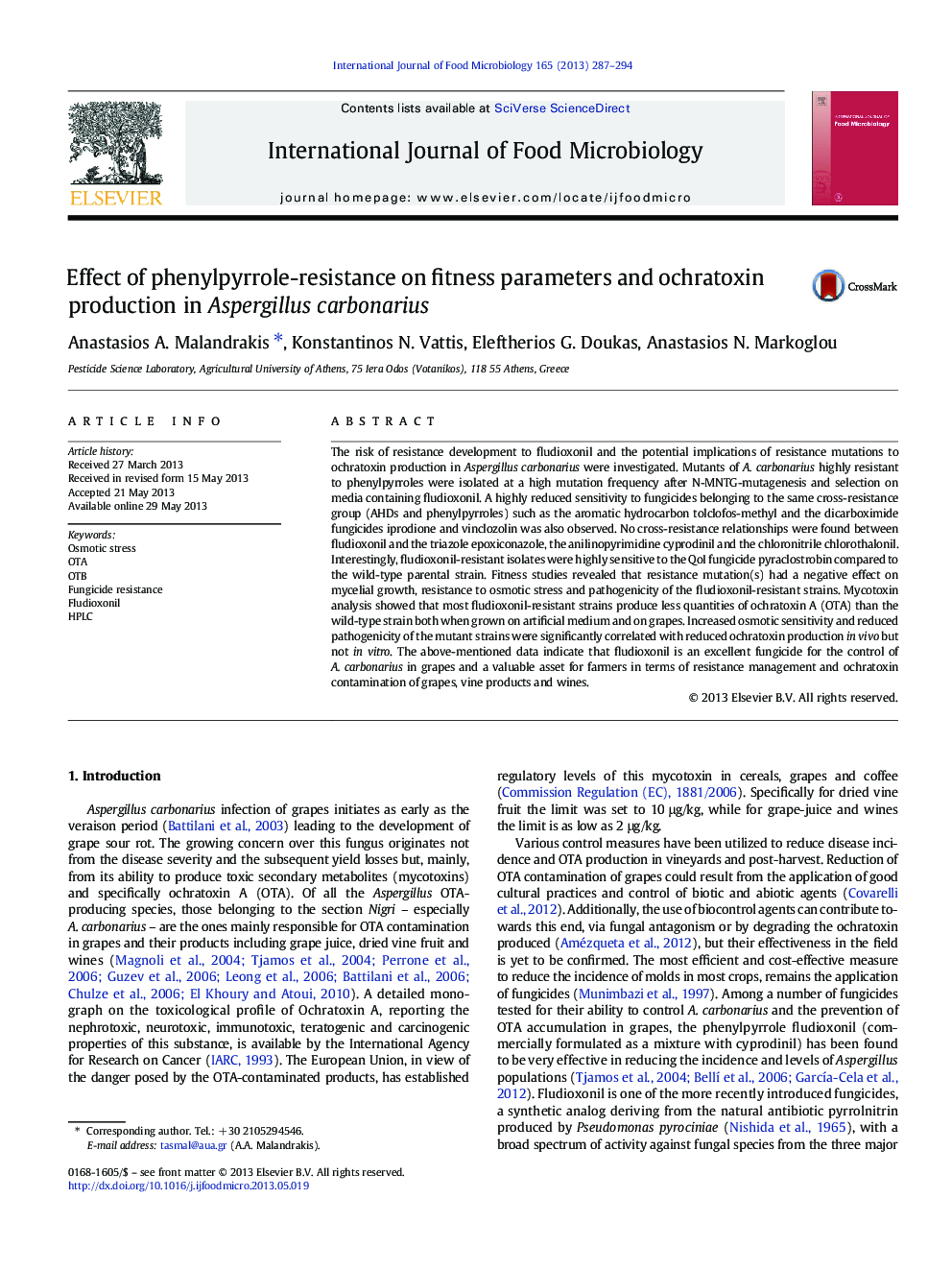| Article ID | Journal | Published Year | Pages | File Type |
|---|---|---|---|---|
| 4367275 | International Journal of Food Microbiology | 2013 | 8 Pages |
•Fludioxonil is highly effective against A. carbonarius.•Highly phenylpyrrole-resistant laboratory isolates were readily isolated.•Laboratory mutants carried fitness penalties and produced less OTA on grapes.•Pyraclostrobin was highly effective against fludioxonil-resistant isolates.
The risk of resistance development to fludioxonil and the potential implications of resistance mutations to ochratoxin production in Aspergillus carbonarius were investigated. Mutants of A. carbonarius highly resistant to phenylpyrroles were isolated at a high mutation frequency after N-MNTG-mutagenesis and selection on media containing fludioxonil. A highly reduced sensitivity to fungicides belonging to the same cross-resistance group (AHDs and phenylpyrroles) such as the aromatic hydrocarbon tolclofos-methyl and the dicarboximide fungicides iprodione and vinclozolin was also observed. No cross-resistance relationships were found between fludioxonil and the triazole epoxiconazole, the anilinopyrimidine cyprodinil and the chloronitrile chlorothalonil. Interestingly, fludioxonil-resistant isolates were highly sensitive to the QoI fungicide pyraclostrobin compared to the wild-type parental strain. Fitness studies revealed that resistance mutation(s) had a negative effect on mycelial growth, resistance to osmotic stress and pathogenicity of the fludioxonil-resistant strains. Mycotoxin analysis showed that most fludioxonil-resistant strains produce less quantities of ochratoxin A (OTA) than the wild-type strain both when grown on artificial medium and on grapes. Increased osmotic sensitivity and reduced pathogenicity of the mutant strains were significantly correlated with reduced ochratoxin production in vivo but not in vitro. The above-mentioned data indicate that fludioxonil is an excellent fungicide for the control of A. carbonarius in grapes and a valuable asset for farmers in terms of resistance management and ochratoxin contamination of grapes, vine products and wines.
